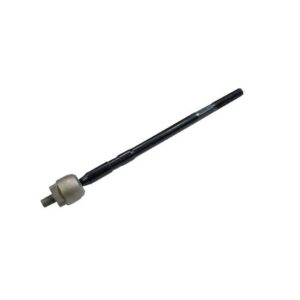Auto parts encompass a broad range of components within a vehicle, including suspension components like tie rods, control arms, and stabilizer links. While they all contribute to the vehicle’s suspension system, they serve different purposes and have distinct functions:
- Tie Rods:
- Function: Tie rods are critical for steering and maintaining proper alignment of the wheels. They transmit force from the steering rack to the steering knuckle, allowing the wheels to turn in response to steering input.
- Location: Tie rods are typically located at the ends of the steering rack and connect to the steering knuckles, forming a crucial link between the steering system and the wheels.
- Design: They often consist of an inner tie rod end connected to the steering rack and an outer tie rod end linked to the steering knuckle, connected by an adjustable or fixed rod.
- Control Arms:
- Function: Control arms, also known as A-arms or wishbones, connect the suspension to the vehicle’s frame or body. They control the wheel’s movement, china auto parts providing support and allowing the wheels to move in a controlled manner.
- Location: Control arms are typically mounted between the frame or body of the vehicle and the steering knuckle or wheel hub assembly.
- Design: Control arms can have various designs, including upper and lower control arms in some suspension setups. They often consist of a metal frame with bushings or ball joints at each end to allow for movement and flexibility.
- Stabilizer Links:
- Function: Stabilizer links, also called sway bar links, connect the stabilizer bar (sway bar) to the suspension components. They reduce body roll and sway during cornering by transferring force between the left and right sides of the suspension.
- Location: Stabilizer links are positioned between the stabilizer bar and the control arms or struts in many suspension systems.
- Design: Stabilizer links typically consist of a metal rod with ball joints or bushings at each end to allow for movement and flexibility while providing a solid connection between the stabilizer bar and the suspension.
While these components are all vital for the vehicle’s suspension system, they serve distinct purposes in controlling steering, wheel movement, stability, and handling. Their locations, functions, and designs are tailored to manage specific aspects of the suspension and steering systems, contributing to overall vehicle performance and safety.
What role do auto parts play in ensuring vehicle safety and stability?
Auto parts, especially those related to the suspension and steering systems, play crucial roles in ensuring vehicle safety and stability:
- Steering Components (Tie Rods):
- Steering Control: Tie rods are pivotal for steering control, transmitting the driver’s steering input from the steering rack to the wheels. Properly functioning tie rods ensure precise and responsive steering, crucial for avoiding obstacles and maintaining control of the vehicle.
- Suspension Components (Control Arms, Stabilizer Links):
- Stability and Handling: Control arms and stabilizer links contribute to stability and handling by controlling the movement and alignment of the wheels. They help maintain proper tire contact with the road surface, ensuring traction and stability during acceleration, braking, and cornering.
- Absorption of Road Irregularities: These components absorb shocks from bumps, potholes, and uneven road surfaces, minimizing the impact felt inside the vehicle. This ensures a smoother and more comfortable ride while enhancing control and stability.
- Overall Vehicle Balance:
- Body Roll Reduction: Stabilizer links, specifically, reduce body roll during cornering by transferring force between the left and right sides of the suspension. This minimizes the vehicle’s tendency to lean excessively, improving stability and maintaining tire grip.
- Safety Considerations:
- Prevention of Catastrophic Failures: Properly functioning suspension and steering components prevent catastrophic failures that could lead to loss of control, wheel misalignment, or steering issues while driving.
- Impact on Other Safety Systems: Well-maintained suspension and steering components positively influence other safety systems, such as ABS (Anti-lock Braking System), traction control, and stability control. They contribute to the overall effectiveness of these systems in emergency situations.
- Alignment and Tire Wear:
- Proper Alignment: Correctly aligned suspension components, including tie rods and control arms, ensure proper wheel alignment. Improper alignment can lead to uneven tire wear, affecting safety, handling, and fuel efficiency.
In summary, auto parts within the suspension and steering systems are integral to maintaining vehicle safety, stability, and control. Their proper functioning ensures predictable handling, optimal tire contact with the road, and a comfortable driving experience while significantly contributing to overall road safety for both the vehicle occupants and others on the road.
